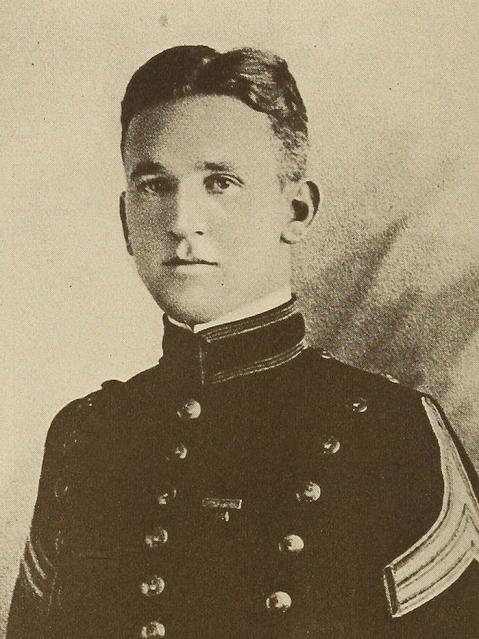Hamilton, Perley Raymond
- Who
- WWI driver
- When
- WWI
- Where
- France
- Education
- Fenway Schhol of Art; N.Y. Military Acad
Public domain: Memorial Volume of the American Field Service in France, 1921.
Born October 30, 1892, in Clinton. Massachusetts. Son of John and Bertha Newman Hamilton. Educated Clinton High School, Fenway School of Art, Boston, and New York Military Academy. Reportorial work, Clinton "Times," and Salesman. Joined American Field Service, June 9, 1917; attached Section Sixty-six. Killed by shell, July 29, 1917, at Village Nègre, Chemin des Dames, near Craonne. Croix de Guerre. Buried Beaurieux, Aisne. Body to be transferred to Woodlawn Cemetery, Clinton, Massachusetts.
LATE in the night of July 28, 1917, Perley Raymond Hamilton sat at a little table in a corner of an abri crowded with groaning wounded, writing a hasty note to his mother by the light of a flickering candle-end. He had just received his first letter from her since he left home and he was anxious to let her know his joy in it and to assure her that all was well with him. "I am feeling fine and strong," he wrote, "and I can make up the sleep when the battle calms down a bit." It had been forty-eight hours since he had last slept, but he felt it more important to comfort his mother than to take the rest for which his whole tired body cried out. He was forced to stop, he concluded, because "I am to leave with a load of blessés in a few minutes and must have things ready for them." He sealed the letter and climbed out of the abri. Shells were falling nearby and the éclats whined past occasionally, rattling against the doorway. He cranked his car while his companion, James Gailey, assisted the loading of -the wounded. And then suddenly it happened. There was a quick, terrifying shock --- and blackness . . . . . Their comrades found "Ham" bowed over the steering wheel, still "on duty."
Perley was a student of the New York Military Academy at the time that he joined the American Field Service. He was a talented artist and musician and as a cadet had held the rank of Principal Musician and later of Senior First Lieutenant. The Academy paper described him as,"always extremely popular with the whole cadet corps, for he was not only a gifted musician but also one of those cheerful, optimistic, straightforward natures which make friends without effort." On June 7, 1917, he sailed on the Espagne and within a month he was working in the midst of the fierce battle being raged for the possession of Craonne Plateau. The letters he wrote in the short time before his death are remarkable for the depth of their feeling and their power of description. No one who has experienced an air-raid can read the following without a thrill of understanding ". . . . As the purr of the motor appears to be directly overhead there is a quick scampering of people and then a deadly silence, for in that awful moment before the crash all things seem still."
He was quick and sympathetic in his appreciation of the French and thoroughly happy in serving them; so it is fitting that death should have come to him while he was in the very act of bringing aid and comfort to their wounded. No other ending of his life could have been more perfect in his own eyes or more beautiful as we see it. And his service was appreciated. General Niessel, the commander of the army corps that had so stubbornly resisted the German onslaught along the Chemin des Dames, attended the funeral in person and pronounced the last farewell as he placed the Croix de Guerre upon the coffin.
Perley's section leader, William Gorham Rice, Jr., voiced the feeling of the section. "'Ham' has more than our undying respect. He won our love and so our sympathy . . . . . For he was always cheery and helpful and ready to do more than was asked of him." Rice tells of having asked "Ham" a short time before his death to work out a design to be painted on the cars of the section. "In a few days he showed me a fine composition with the motto 'Toujours prêt.'" Soon after, when the attack started, though still weak from a recent illness he declared himself ready for anything, as he always was, even if he had to drive through gas, though, as Rice said, "he must have dreaded that, for we feared the mask and his asthma might choke him." He lived true to his own motto, like the soldier that he was, " Toujours prêt."
- Tribute from Memorial Volume of the American Field Service, 1921
WWI File
- Months of service
- 1, 1917
- Section(s)
- S.S.U. 66
- Home at time of enlistment
- Clinton, Mass., USA
- KIA
- killed as volunteer
Decoration(s) received while volunteer of the Field Service
- Croix de Guerre WW1


